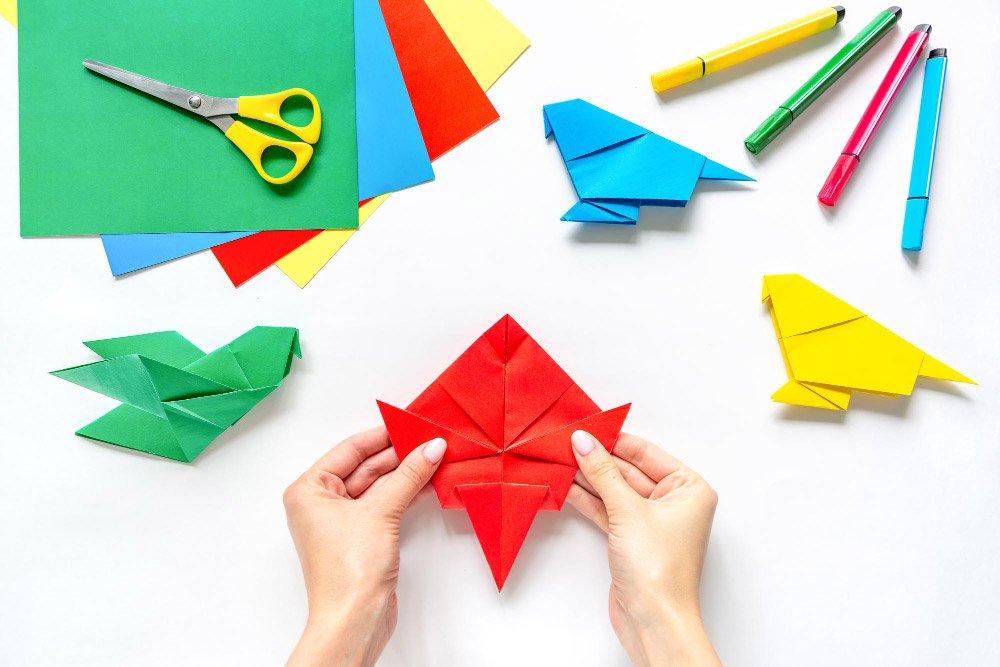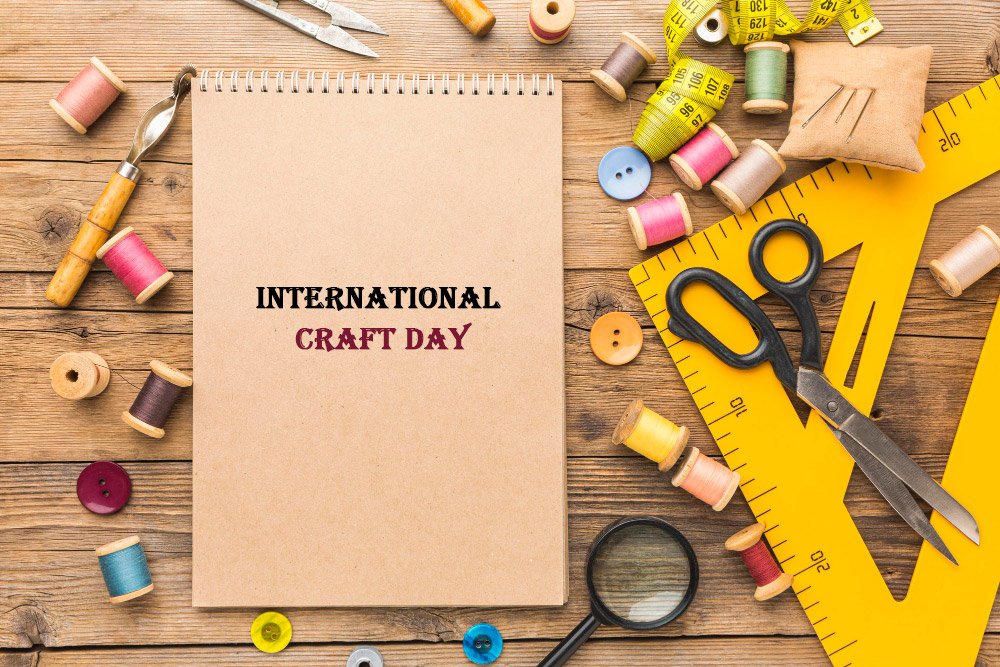What is Origami?
Origami is more than just a hobby; it’s a fascinating art form with a rich history, cultural significance, and educational benefits. It’s a beautiful and accessible way for anyone to explore their creativity, challenge themselves, and appreciate the power of paper folding.
Benefits of Origami
- Cognitive development: It encourages critical thinking, problem-solving, spatial reasoning, and fine motor skills.
- Stress reduction: The repetitive folding process can be calming and meditative, promoting relaxation and focus.
- Creativity and imagination: It allows individuals to explore their creative potential and express themselves through unique paper creations.
- Cultural appreciation: It provides insights into Japanese culture and traditions, fostering global awareness and understanding.
Origami is the Japanese art of paper folding. It involves transforming a flat square sheet of paper into intricate and beautiful three-dimensional sculptures through a series of folds and techniques.
Spotlights:
- How origami activities encourage critical thinking and problem-solving skills in students
- Folding techniques in origami
- Role of origami in teaching patience and attention among students
When and where did origami originate?
The exact origins of origami remain debated, but most evidence suggests it arose in China around the 2nd century AD with the invention of paper. Early forms of paper folding were likely used for religious and ceremonial purposes. It wasn’t until the 6th century that papermaking spread to Japan, where origami flourished and developed into the intricate art form we recognize today.
What are some cultural traditions or stories associated with origami?
Origami is deeply intertwined with Japanese culture, holding a significant place in traditions, folklore, and spiritual practices. Here are some fascinating cultural aspects associated with this art form:
1. Senbazuru: The Thousand Paper Cranes:
A prominent legend tells the story of Sadako Sasaki, a young girl who developed leukemia from the atomic bomb dropped on Hiroshima. Inspired by the Japanese belief that folding 1000 paper cranes grants wishes, Sadako embarked on her mission, hoping for her recovery and world peace. Though she sadly passed away before completing her goal, her story and the symbol of the thousand paper cranes became a powerful symbol of hope, peace, and resilience.
2. Origami in Religious Ceremonies:
Origami figures often play a role in religious ceremonies and rituals. For example, the Mitsu-mata (triple-folded paper) is used in Shinto purification rites, and nozomi-oroshi (wishing paper) is offered at shrines and temples. These folded paper representations hold symbolic meanings and serve as offerings to deities or expressions of wishes and aspirations.
3. Origami as Gifts and Decorations:
Traditionally, origami figures were exchanged as gifts during celebrations and holidays. They were also used to decorate homes and temples, adding a touch of beauty and symbolism to various occasions. Notably, the tsuru (crane) is a popular origami figure symbolizing longevity and good fortune, often displayed during weddings and festivals.
4. Origami and Samurai Culture:
Origami was also practiced by samurai warriors as a means of training their concentration and fine motor skills. Folding complex figures required patience, precision, and attention to detail, qualities highly valued by the warrior class.
5. Folding for Luck and Protection:
In Japanese folklore, certain origami figures are believed to bring good luck and protect from misfortune. For instance, Katamari (balls) are said to attract wealth, and kitsune (foxes) are considered guardians against evil spirits.
Beyond these specific examples, the art of origami embodies several core Japanese values:
- Respect for nature: The use of a single sheet of paper reflects mindfulness and appreciation for natural resources.
- Attention to detail: Precision and meticulous folding are essential to achieving the desired result.
- Creativity and innovation: Origami encourages exploration and experimentation in design and expression.
- Discipline and patience: Mastering the art requires dedication and perseverance.
These cultural aspects contribute to the unique charm and significance of origami, solidifying its position as an art form that transcends mere paper folding and deeply connects to the heart of Japanese tradition.
What are the basic folds used in origami?

The art of origami relies on a set of fundamental folds that are the building blocks for creating countless intricate shapes and figures. Mastering these basic folds is crucial for anyone wanting to venture into the world of paper folding.
Here are the five essential folds you need to know:
- Valley Fold: This is the most basic fold, resembling the letter “V.” Simply fold the paper in half, bringing the opposite edges together and creating a valley crease in the center.
- Mountain Fold: This fold is the opposite of the valley fold, resembling the letter “M.” Fold the paper upwards in half, bringing the opposite edges together and creating a mountain crease in the center.
- Reverse Fold: This fold involves folding a corner of the paper back on itself. Imagine opening a book page halfway and then folding the corner back towards the spine. This creates a diagonal crease and a small triangular flap on the edge.
- Squash Fold: This fold flattens a triangular flap by pushing the corners inwards until they meet at the point. This technique is often used to create sharp edges and points on origami figures.
- Pleat Fold: This fold involves making multiple parallel folds close together. Imagine folding a fan; you create a series of peaks and valleys by folding the paper back and forth repeatedly.
Mastering these basic folds is the first step to unlocking the creative potential of origami. As you practice and gain confidence, you can combine these folds in various ways to create a wide range of shapes and figures. Remember, practice makes perfect, and soon you’ll be folding complex and beautiful origami creations with ease.
Here are some additional tips for mastering basic folds:
- Use crisp, flat paper for best results.
- Crease your folds firmly but gently to avoid tearing the paper.
- Pay close attention to the direction of the fold and ensure you’re perfectly folding the paper.
- Don’t be afraid to experiment and try different combinations of folds.
- Have fun and enjoy the process!
With dedication and a little practice, you’ll be amazed at the incredible origami creations you can bring to life using just these basic folds.
How do mathematicians and scientists use origami principles in their work?
Mathematicians and scientists have found inspiration and practical uses in the principles of folding paper, leading to advancements in various disciplines:
1. Geometry and Topology:
Origami’s inherent geometric nature makes it a valuable tool for understanding and visualizing complex geometric concepts. Folding patterns can help visualize geometric transformations, explore symmetry principles, and demonstrate spatial relationships. Additionally, origami models like the Miura-ori can be used to study topology, the branch of mathematics concerned with shapes and their properties.
2. Material Science and Engineering:
The principles behind origami folding can be applied to design new materials and structures with unique properties. For instance, scientists are developing deployable solar panels inspired by origami mechanisms, allowing them to pack compactly for launch and unfold into large panels in space. Origami folds are also used to create intricate structures with high strength-to-weight ratios, making them ideal for lightweight materials in engineering applications.
3. Robotics and Artificial Intelligence:
Researchers are exploring origami-inspired robots capable of folding and unfolding to navigate complex environments or perform specific tasks. These robots can be used for search and rescue missions in tight spaces, minimally invasive surgery, and even micro-assembly of intricate components. Additionally, origami principles are inspiring the development of self-folding robots that can assemble themselves upon deployment.
4. Nanotechnology and DNA Origami:
Scientists are using origami principles to manipulate DNA strands into specific shapes and structures. This technique, known as DNA origami, has potential applications in drug delivery, biosensing, and the development of nanomachines. By folding DNA into specific shapes, researchers can control its interactions with other molecules and create new materials with unique functionalities.
5. Mathematical Modeling and Problem-Solving:
Origami models can be used to represent complex systems and study their behavior. By analyzing the folds and stresses within an origami structure, mathematicians can develop mathematical models to predict its behaviour under different conditions. This approach has applications in material science, engineering, and various other fields where understanding the behaviour of complex systems is crucial.
What are some real-world applications of origami beyond art and recreation?

While origami is primarily recognized as an artistic and recreational activity, its applications extend far beyond beautiful paper creations. The principles of folding and the unique properties of origami structures have found practical uses in various real-world fields:
1. Engineering and Design:
- Deployable structures: Origami-inspired mechanisms are used to create lightweight and compact structures that can be easily deployed or self-assembled. This has applications in space exploration, disaster relief, and construction.
- Metamaterials: By strategically folding materials, scientists are creating metamaterials with unique properties not found in nature. These materials have potential uses in optics, electronics, and energy harvesting.
- Lightweight structures: Origami principles can be used to design strong and lightweight structures for various applications, such as aircraft wings, bridges, and medical implants.
2. Medicine and Healthcare:
- Drug delivery: Origami-based structures can be used to deliver drugs directly to target cells, improving efficacy and reducing side effects.
- Stents and implants: Origami-inspired stents and implants can be folded flat for minimally invasive insertion and then expand to their desired shape inside the body.
- Tissue engineering: Origami techniques can be used to create scaffolds for tissue engineering, guiding the growth of new cells and tissues.
3. Robotics and Artificial Intelligence:
- Self-folding robots: Robots inspired by origami can fold and unfold themselves, allowing them to navigate complex environments or perform specific tasks.
- Soft robotics: Origami principles are used to create soft robots capable of mimicking the movements of living organisms, making them ideal for interacting with humans and delicate objects.
- Microfluidics: Origami-based microfluidic devices can be used to manipulate tiny amounts of fluids, making them valuable tools for research and diagnostics.
4. Environmental Sustainability:
- Solar panels: Origami-inspired solar panels can be folded compactly for storage and transport and then unfolded to capture more sunlight.
- Water purification: Origami structures can be used to filter and purify water, providing access to clean drinking water in resource-limited communities.
- Packaging: Origami-based packaging can be folded flat, reducing storage space and environmental impact.
5. Education and Communication:
- Visualization tools: Origami models can be used to visualize complex concepts in mathematics, science, and engineering, making learning more interactive and engaging.
- Communication aids: Origami can be used to create communication aids for people with disabilities.
- Cultural exchange: Origami provides a platform for cultural exchange and understanding, promoting collaboration and creativity across different communities.
These are just a few examples of the diverse real-world applications of origami. As research and development continue, we can expect to see even more innovative uses for this ancient art form in the future. It serves as a reminder that simple ideas can have profound impacts, inspiring creativity and driving progress across various disciplines.
7 Reasons Why Origami Boosts Students’ Skills
Origami, the art of paper folding, offers far more than just recreational fun. This engaging activity provides a wealth of educational benefits for students of all ages. Let’s explore seven key reasons why incorporating origami into your classroom curriculum can positively impact various aspects of your student’s development.
1. Critical Thinking and Problem Solving:
Folding paper into intricate shapes requires careful planning, sequential thinking, and adaptation. Students are encouraged to analyze instructions, visualize the final product, and troubleshoot any difficulties encountered during the folding process. This fosters critical thinking skills as they experiment with different strategies and techniques to achieve the desired outcome.
2. Spatial Reasoning and Visualization:
Origami activities are excellent tools for developing spatial reasoning and visualization skills. Students need to mentally manipulate the paper in their minds, imagining the folds and transformations it will undergo to create the final shape. This strengthens their ability to understand and navigate three-dimensional space, a crucial skill in various fields like mathematics, science, and engineering.
3. Fine Motor Skills and Hand-Eye Coordination:
Folding origami requires precise hand movements and coordination between the eyes and hands. As students practice folding different shapes, they refine their fine motor skills, dexterity, and hand-eye coordination. This improved motor control benefits them not only in origami but also in other areas like writing, drawing, and playing musical instruments.
4. Following Instructions and Attention to Detail:
Successful origami creations rely heavily on following instructions accurately and paying close attention to detail. Students need to be mindful of each fold, its direction, and its position to ensure the final product resembles the desired shape. This fosters discipline, attention to detail, and the ability to follow instructions precisely, valuable skills that translate well into other academic and life situations.
5. Patience and Perseverance:
Folding complex origami figures can be challenging and requires patience and perseverance. Students encounter frustration and setbacks during the process, but they learn to persevere and try again, adapting their strategies and developing resilience. This builds their character and instills valuable life lessons about overcoming challenges and achieving goals through dedication and effort.
6. Creativity and Imagination:
Origami encourages students to explore their creativity and express themselves through unique paper creations. As they experiment with different folding techniques and designs, they develop their imagination and artistic abilities. This fosters individual expression, divergent thinking, and the ability to visualize innovative solutions to problems.
7. Cultural Appreciation and Global Awareness:
Origami originated in Japan and holds a significant place in its cultural heritage. Through origami activities, students gain insights into Japanese culture, traditions, and artistic expressions. This promotes cultural appreciation and understanding, fostering global awareness and sensitivity to different ways of life.
How Origami Activities Encourage Critical Thinking and Problem-Solving Skills in Students

Planning and Sequential Thinking:
Origami requires students to analyze instructions, visualize the final product, and plan each fold meticulously. They need to think ahead and anticipate the impact of each fold on the overall shape, encouraging sequential thinking and planning skills.
Experimentation and Adaptation:
The folding process presents challenges as students encounter difficulties interpreting instructions or executing specific folds. This pushes them to experiment with different strategies and adapt their approach, fostering problem-solving skills and resilience.
Visualization and Spatial Reasoning:
Students need to mentally manipulate the paper in their minds, visualizing the transformations it will undergo with each fold. This strengthens their ability to reason in three-dimensional space, a crucial skill for various fields like maths, science, and engineering.
Folding Techniques in Origami
Basic Folds:
Origami relies on a set of fundamental folds, such as the valley fold, mountain fold, reverse fold, and squash fold. Mastering these basic techniques is essential for building more complex origami figures and developing fine motor skills.
Modular Origami:
This technique involves folding individual units and assembling them to create larger structures. It allows students to explore geometric patterns, symmetry, and tessellations, enhancing their understanding of mathematical concepts.
Wet-Folding:
This advanced technique uses dampened paper to create smooth curves and organic shapes. It requires precise control and dexterity, further refining students’ fine motor skills and hand-eye coordination.
Role of Origami in Teaching Patience and Attention Among Students
Following Instructions:
Origami figures rely on the accurate execution of instructions and attention to detail. Each fold needs to be made with precision and in the right sequence to achieve the desired result. This instills in students the importance of following instructions and paying close attention to details.
Perseverance and Overcoming Challenges:
Complex origami figures require patience and determination. Students face challenges and setbacks that may lead to frustration. However, through perseverance and repeated attempts, they learn to overcome challenges and develop resilience, and valuable life skills applicable beyond origami.
Calming and Focusing Activity:
The repetitive nature of folding paper can be calming and meditative, helping students focus and manage stress. This makes origami a valuable tool for promoting mindfulness and emotional regulation in the classroom.
While seemingly simple, origami offers a treasure trove of educational benefits that contribute to students’ intellectual, social, and emotional development. By incorporating origami activities into your classroom, you can enhance their critical thinking, problem-solving, spatial reasoning, fine motor skills, attention to detail, patience, creativity, and cultural awareness. So, unleash the power of paper folding and unlock the potential within your students!








